Please Leave A Message
Interactive Installation
“Please Leave A Message” is a public message board that I installed in the large window of my workshop. People on the street can access it via Wi-Fi, with their smartphones, and write positive, encouraging notes on it for the other pedestrians to read. Watching the messages being written is quite fascinating, as they are accurately drawn by the beautiful mechanism of a 30 year old “Aritma Colorgraf” pen-plotter on a large roll of paper.

Background
Currently, times are weird. We are living in the midst of the COVID-19 pandemic and large parts of the world are in a lockdown. In Berlin, we are still allowed to have a walk outside and enjoy the sun, as long as we stay with our families and otherwise keep distance from each other.
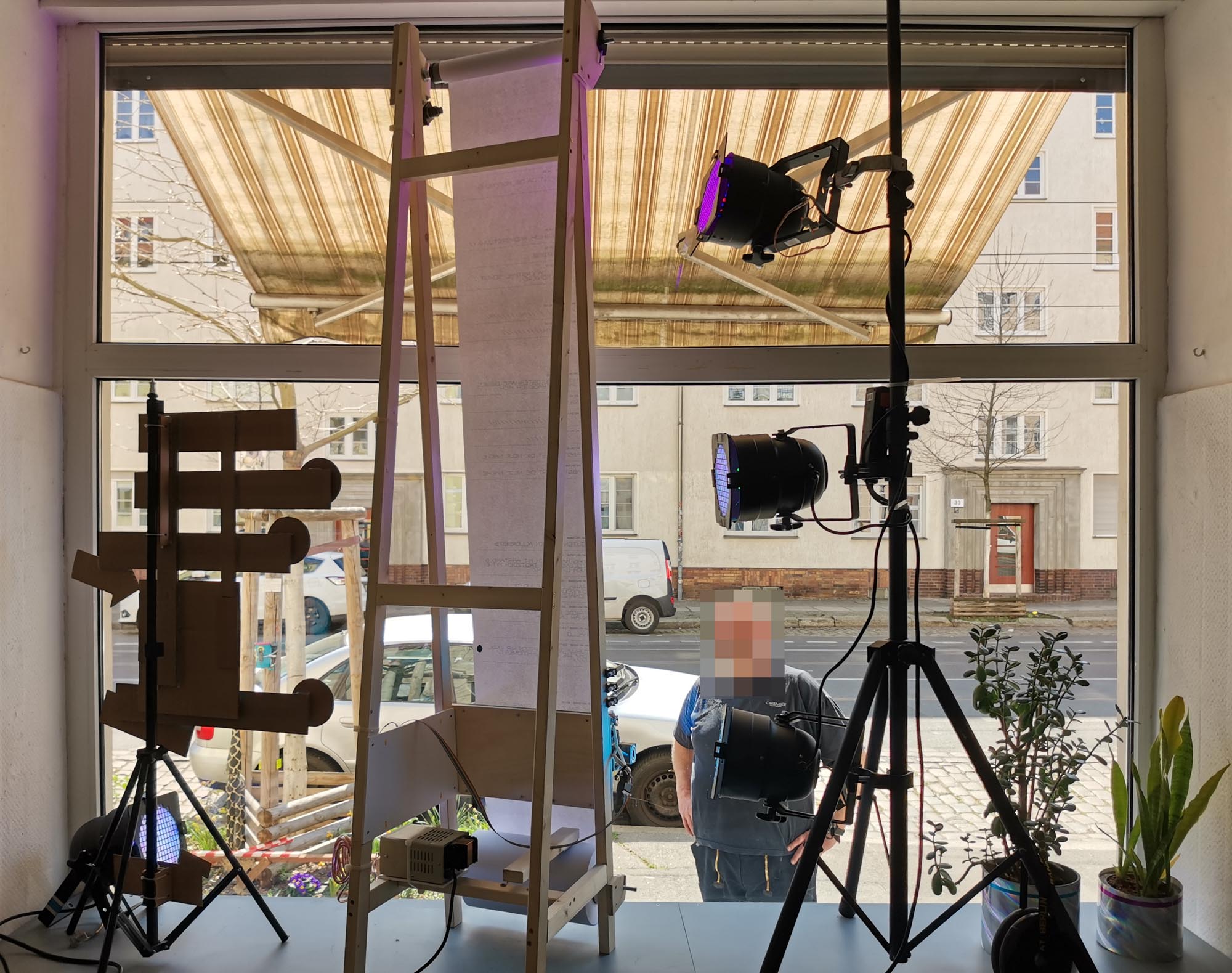
My workshop is located in an old shopfront and many people are passing by every day, heading to the beautiful park around the corner. I thought that it would be nice to cheer them up with a positive message inside the shop window. But I was also feeling weird about the situation myself and I had no clue what that uplifting comment could be. Therefore, I decided that people should probably rather write those nice notes themselves, while I’d care about the infrastructure to display their messages inside the shop window.
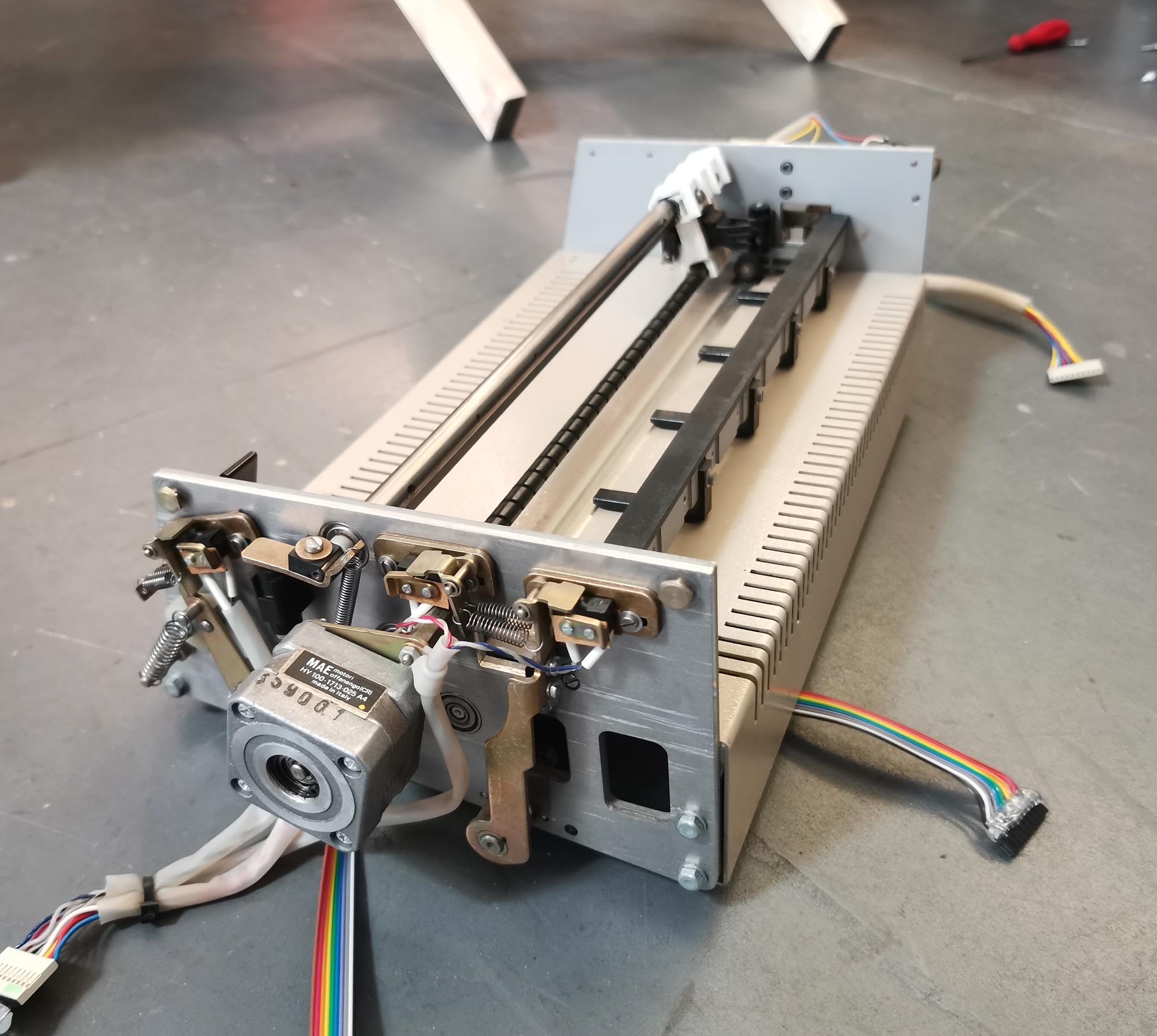
Technical implementation
I still had an old A3 pen-plotter, which my senior neighbor and geek friend Günter once gave to me as a gift. Günter used it back in the days to draw circuit board layouts for his various electronics projects. After years of storage in various cellars, the mechanism of the plotter was still intact, but the electronics weren’t. So I decided to strip down the device, to keep only the mechanism and to replace the rotten electronic circuits with an Arduino MEGA compatible board as a controller. I added two dual H-Bridge driver modules for switching the coils of the x- and y-stepper motors and a transistor for switching the solenoid, which pushes the pen onto the paper. A few test drawings later, the plotter was alive again!
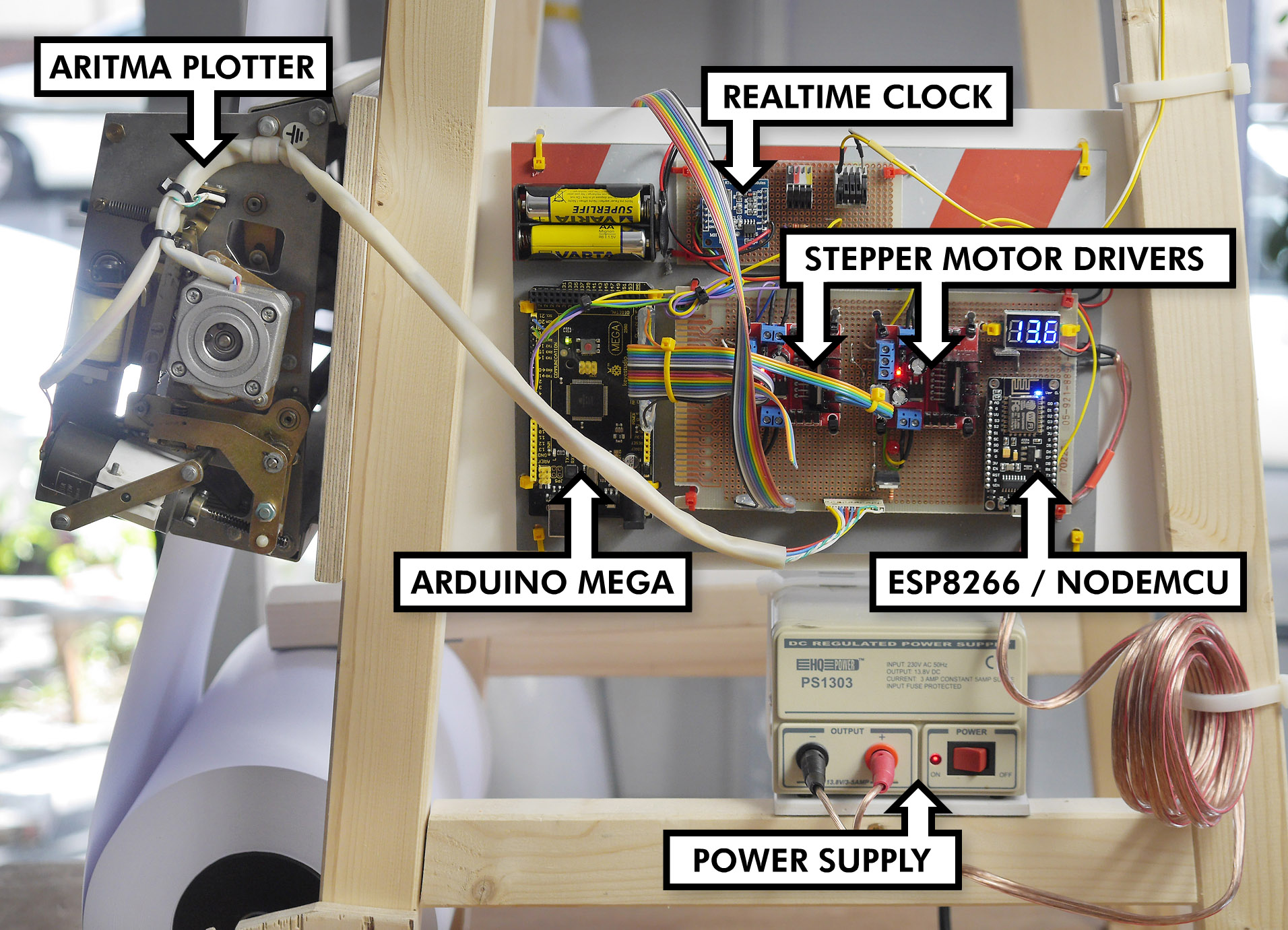
In order to give the people on the street control over the plotter, I added a NodeMCU development board with an ESP8266 on it. The ESP has Wi-Fi capability built in and there are plenty of software libraries available, so it was quite straight forward to open a Wireless Access Point and to host a simple web server. People have to log into the ESP’s network, then they can write a message into the text area of a simple website and hit the “Print” button. Their text is then sent via the ESP’s serial port to the Arduino MEGA, which prints the text on the plotter. Another module that I added was a real time clock, as I also wanted to print out the precise time and date when each message was written.

The final step was to build a big wooden frame onto which I bolted the plotter mechanism. The frame is holding a 175m long roll of paper at its bottom. The paper moves through the plotter to the top of the frame, over a motorized cylinder which keeps tension on the paper, down at the back, where I have to wind it up by hand once in a while.

Typeface
Some people asked me about the typeface, so I'll write a bit about that as well.
The characters of the printed messages have a very distinct, blocky style. The writing is mostly monospaced, however a few glyphs e.g. “I” are kerned. Each character is designed on a 5x5 coordinate system. The grid has an odd number of coordinates for each axis, as some letters like “I”, “T”, “Y” or “H” obviously look nicer with centered horizontal or vertical lines. Each character is drawn on that grid, using only 90° lines, 45° lines and dots.
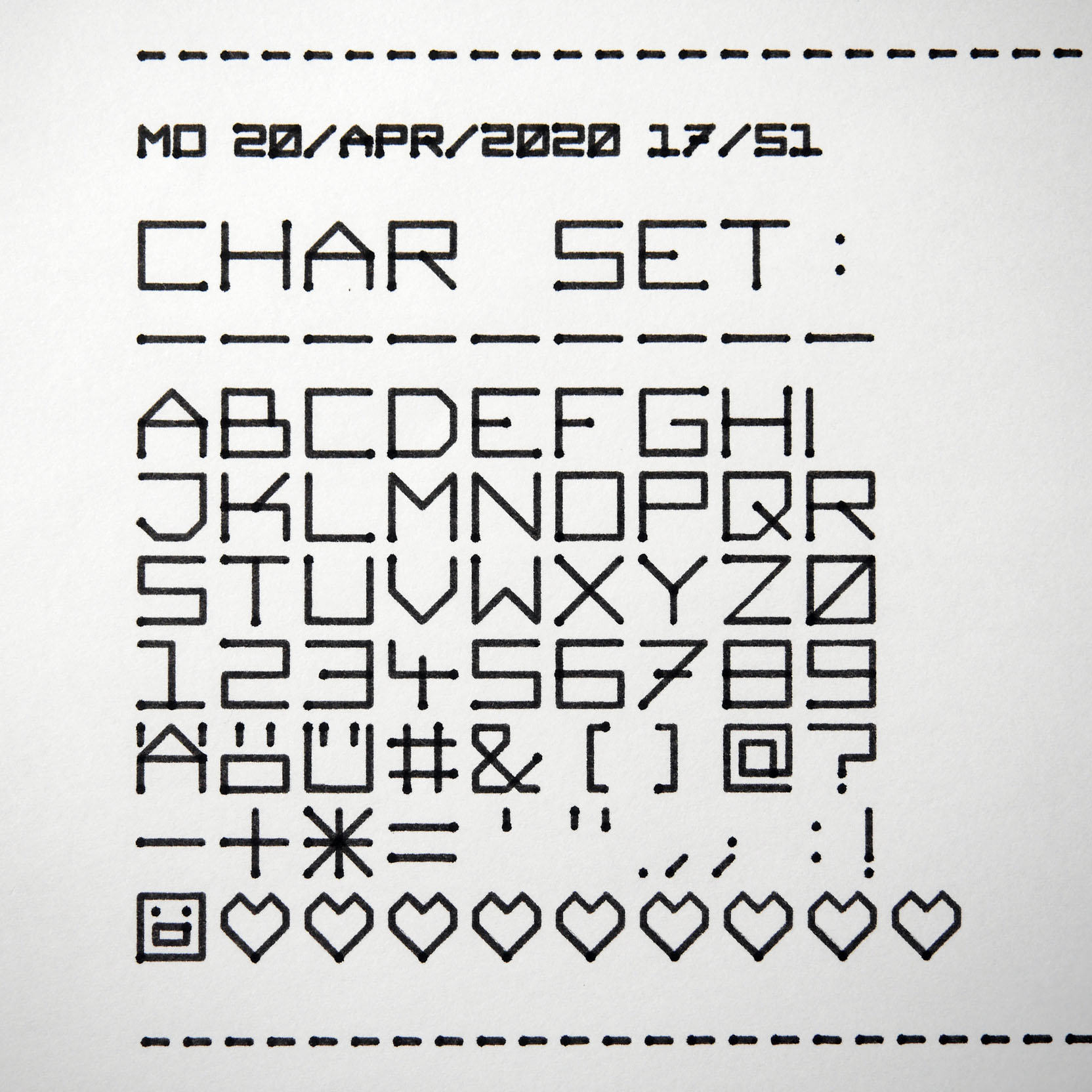
Since I wrote the plotter controller from scratch, I chose those rigid design rules as they could be implemented quickly. In order to draw a horizontal line, only the x-axis motor has to move. For a vertical line, it’s only the motor which is connected to the y-axis and for drawing 45° lines, both motors have to move at the same speed.
The character set started out with only A-Z and 0-9, but I kept adding more and more punctuation marks, special characters as Ä, Ö, Ü and ß and also some emojis, two smileys and a heart.
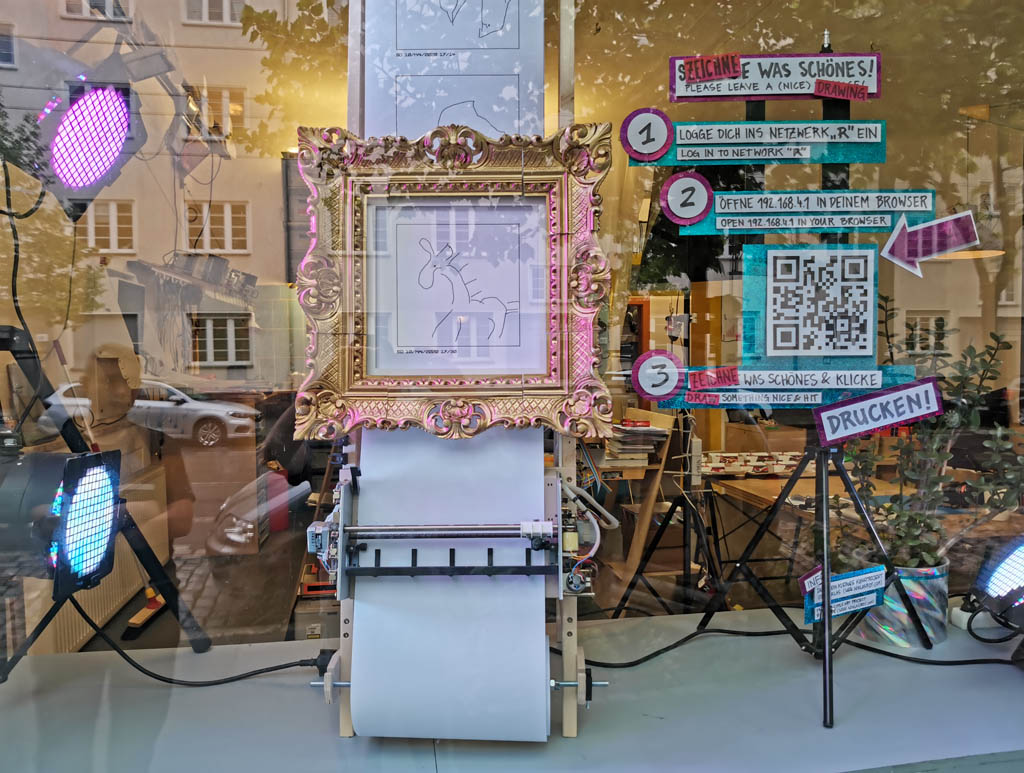
Update
Especially on sunny weekends the plotter enjoyed great popularity. Despite or perhaps because of social distancing, people seemed to enjoy contacting complete strangers through the installation. The way of establishing contact certainly played a role and the plotter in the shop window is at least a real eye-catcher.
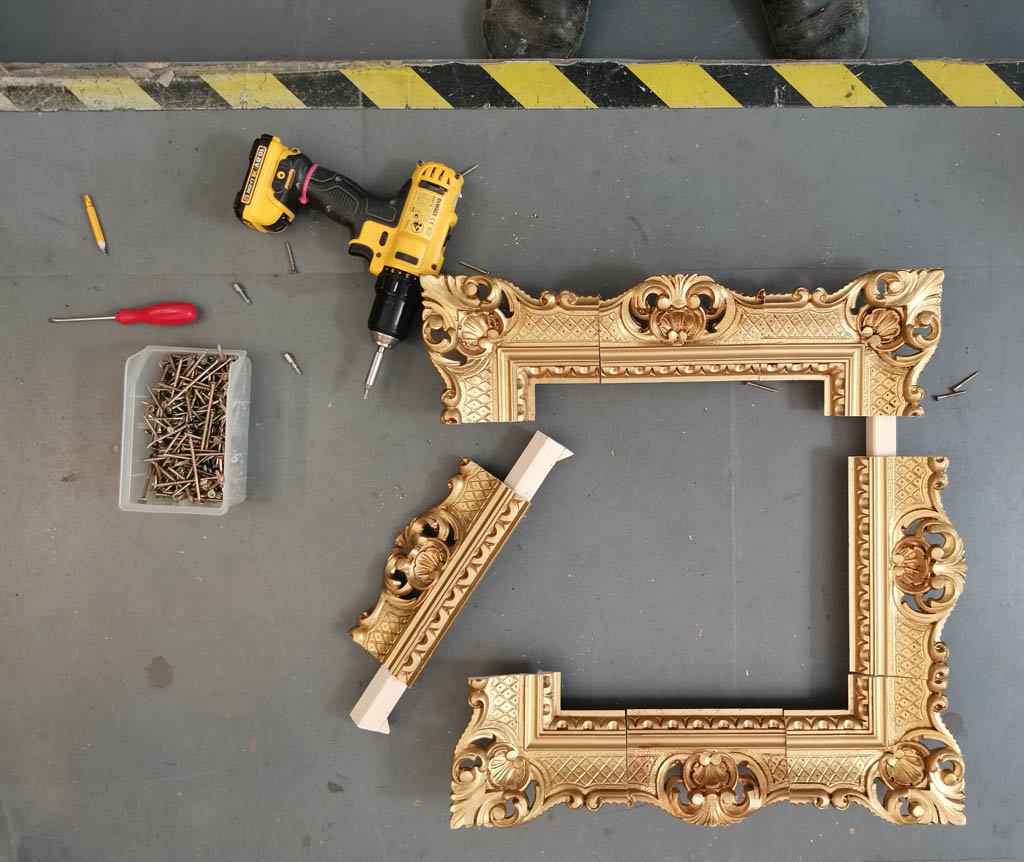
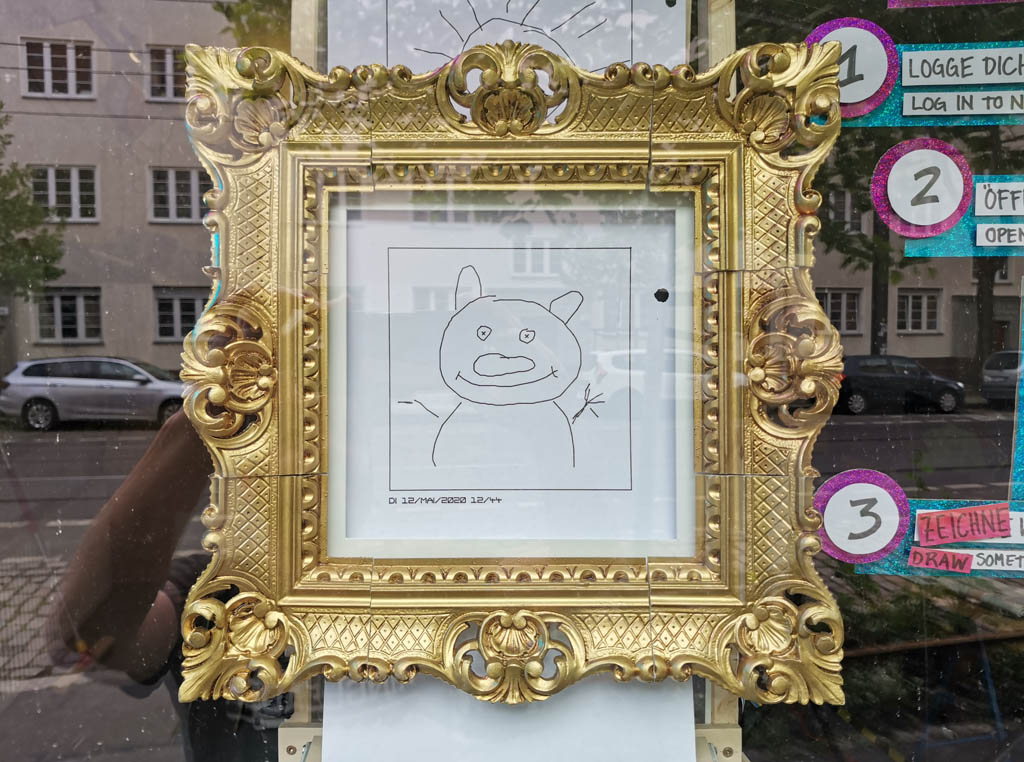
Photos
Below is a collection of photos. You can also find them all in hires, published under a Creative Commons CC BY 3.0 License, here.
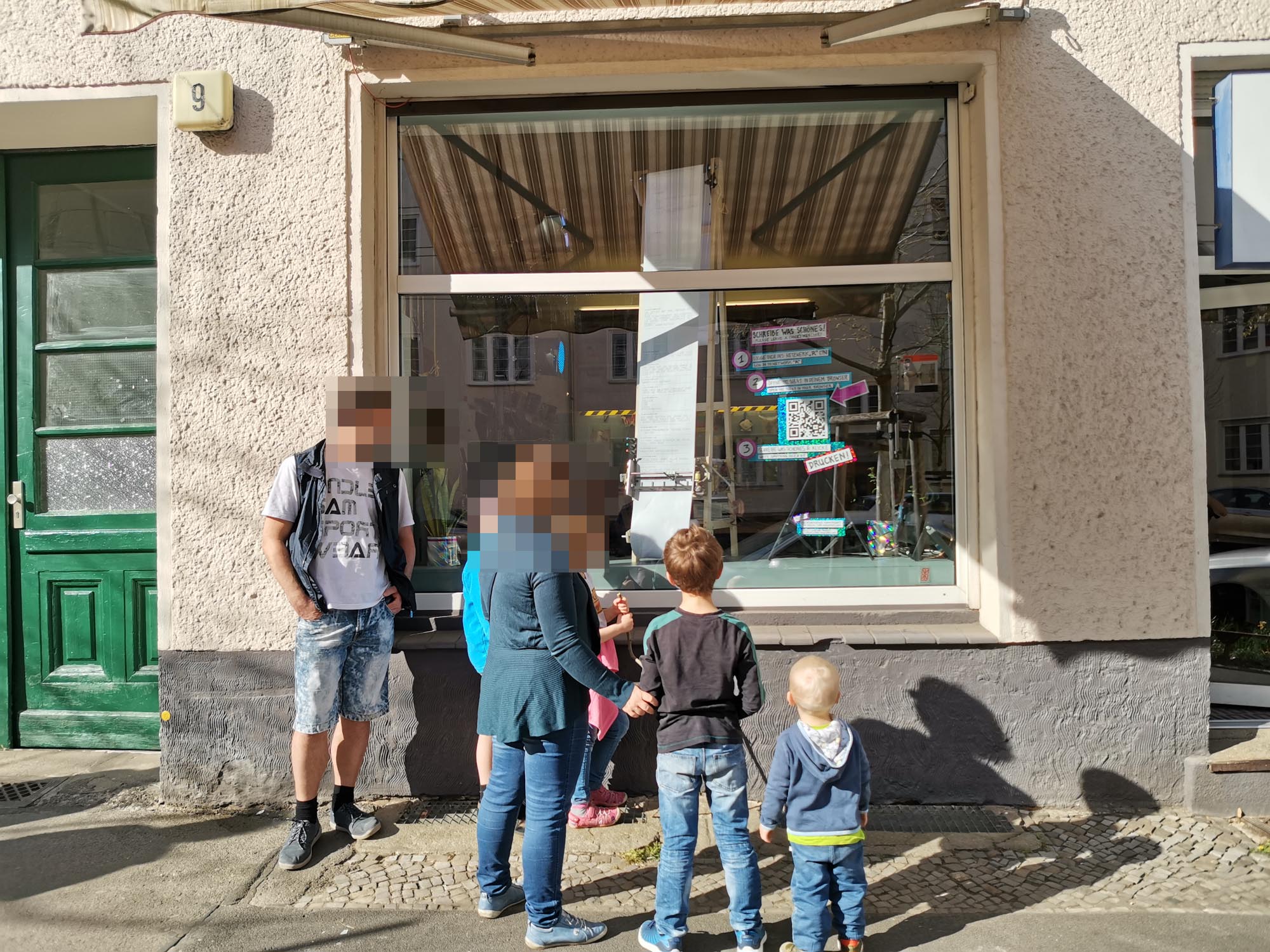
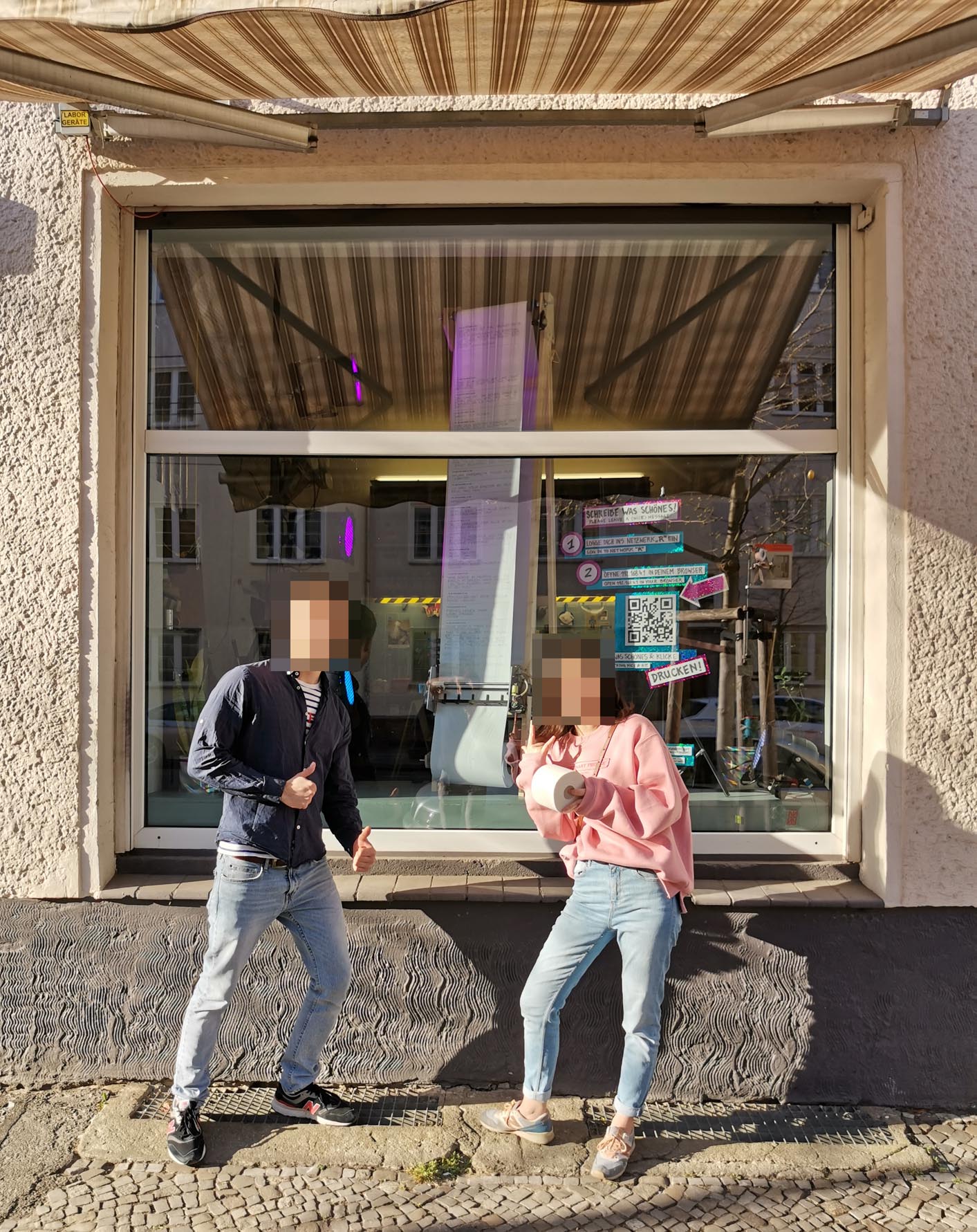
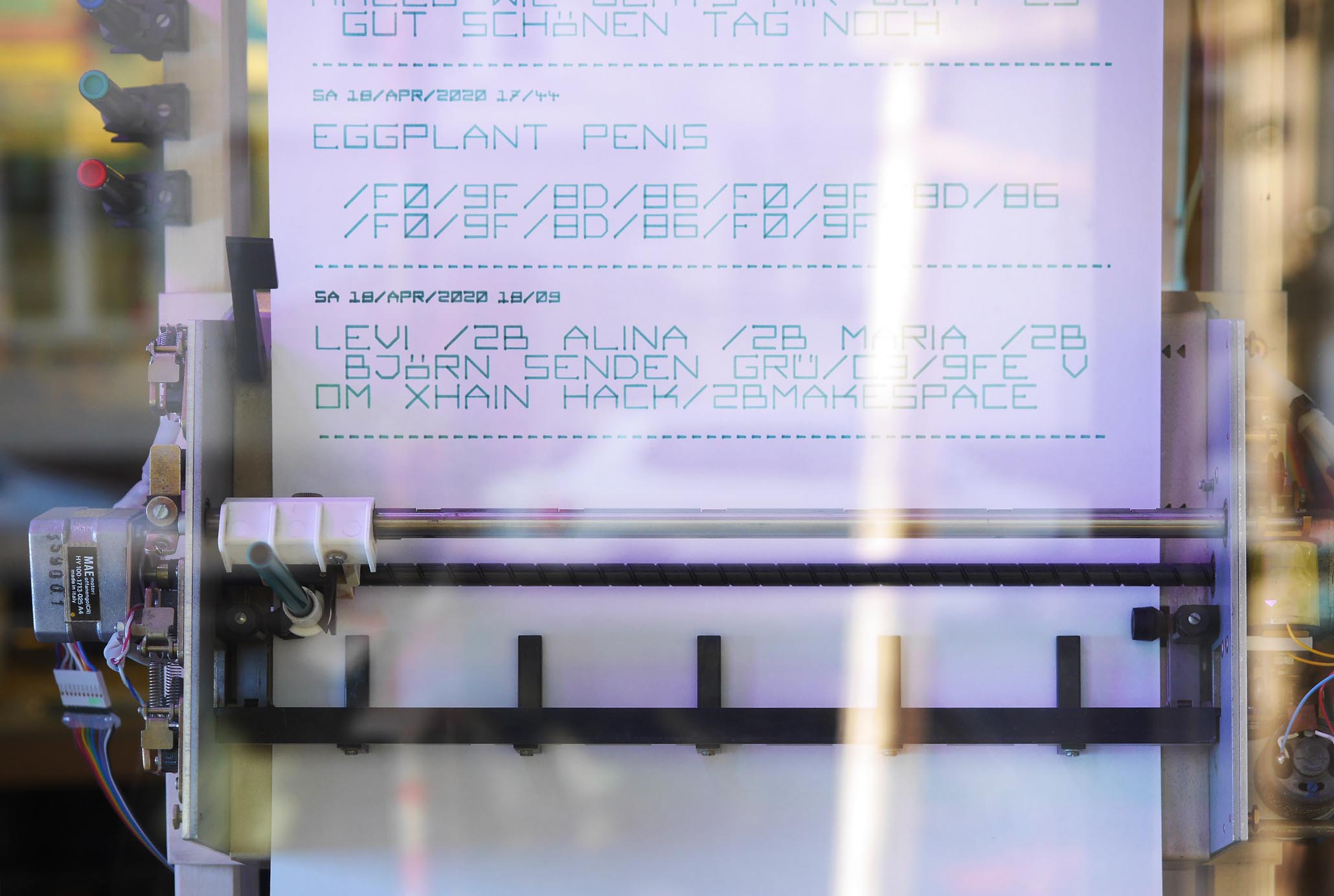
This is the quick and dirty camera slider which I used to film the video.


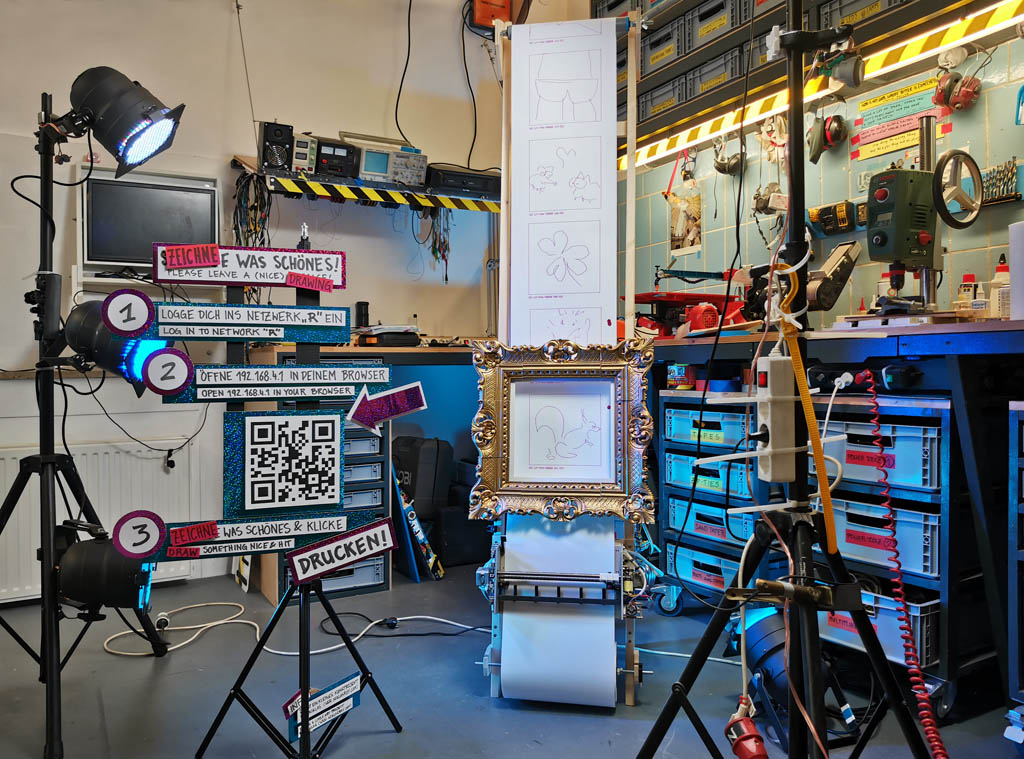
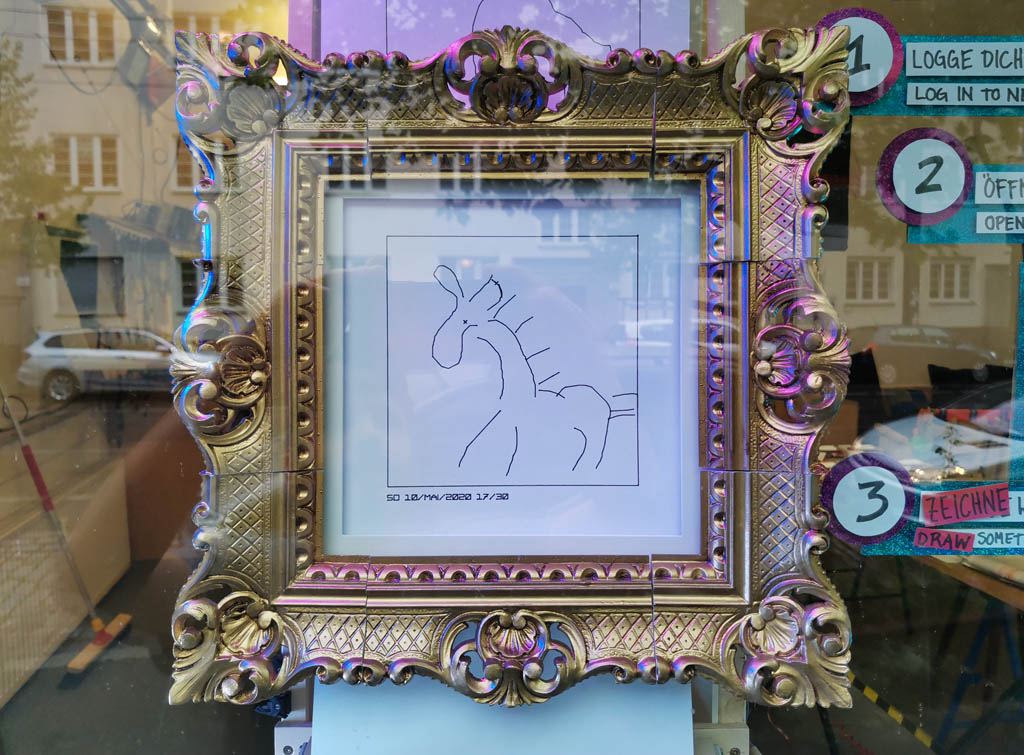
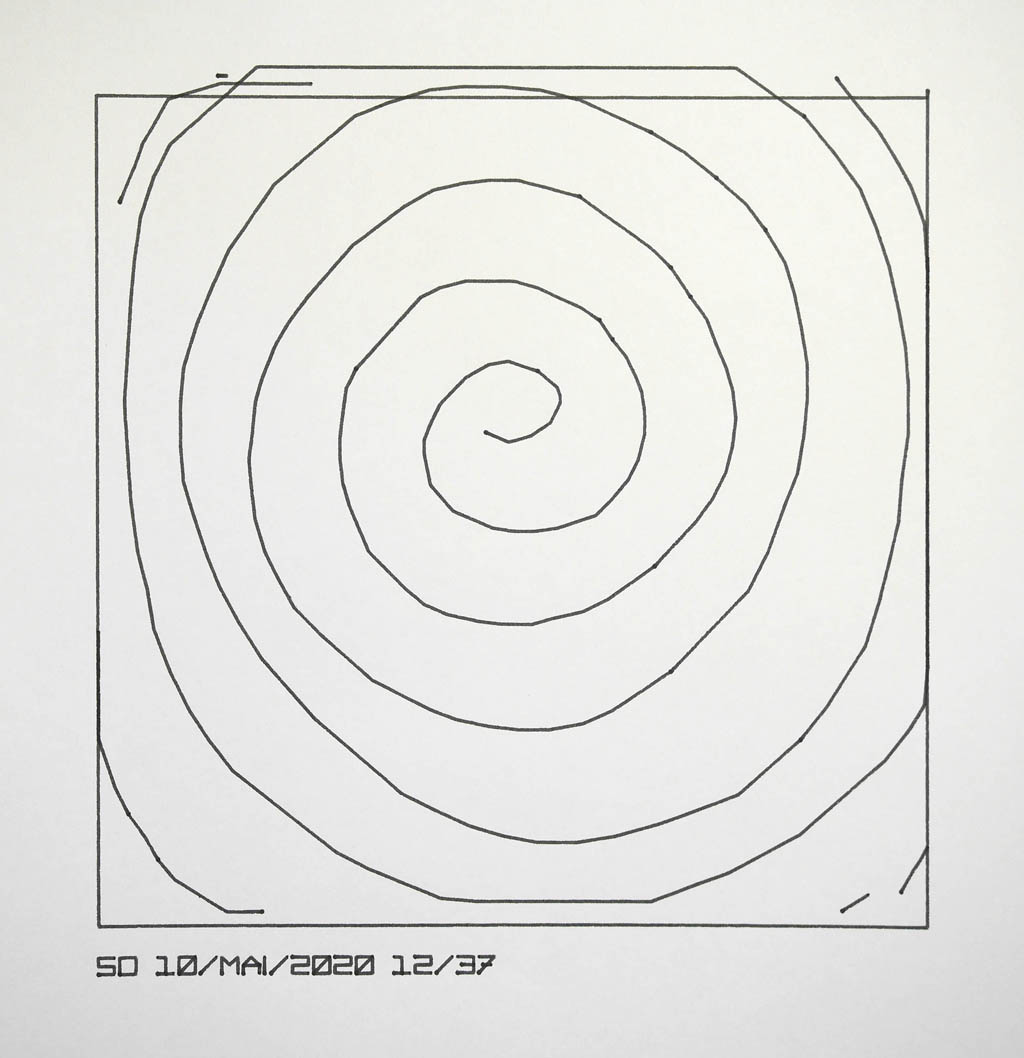
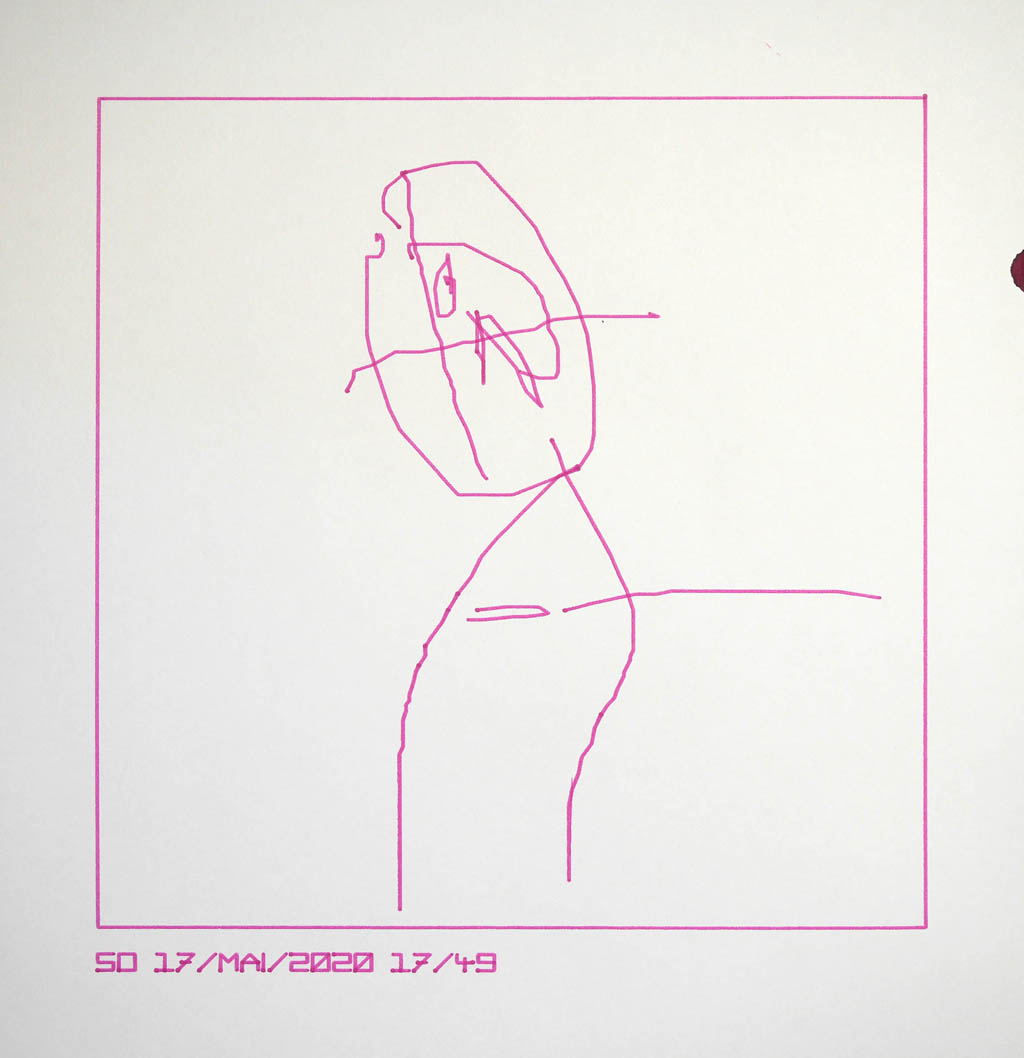
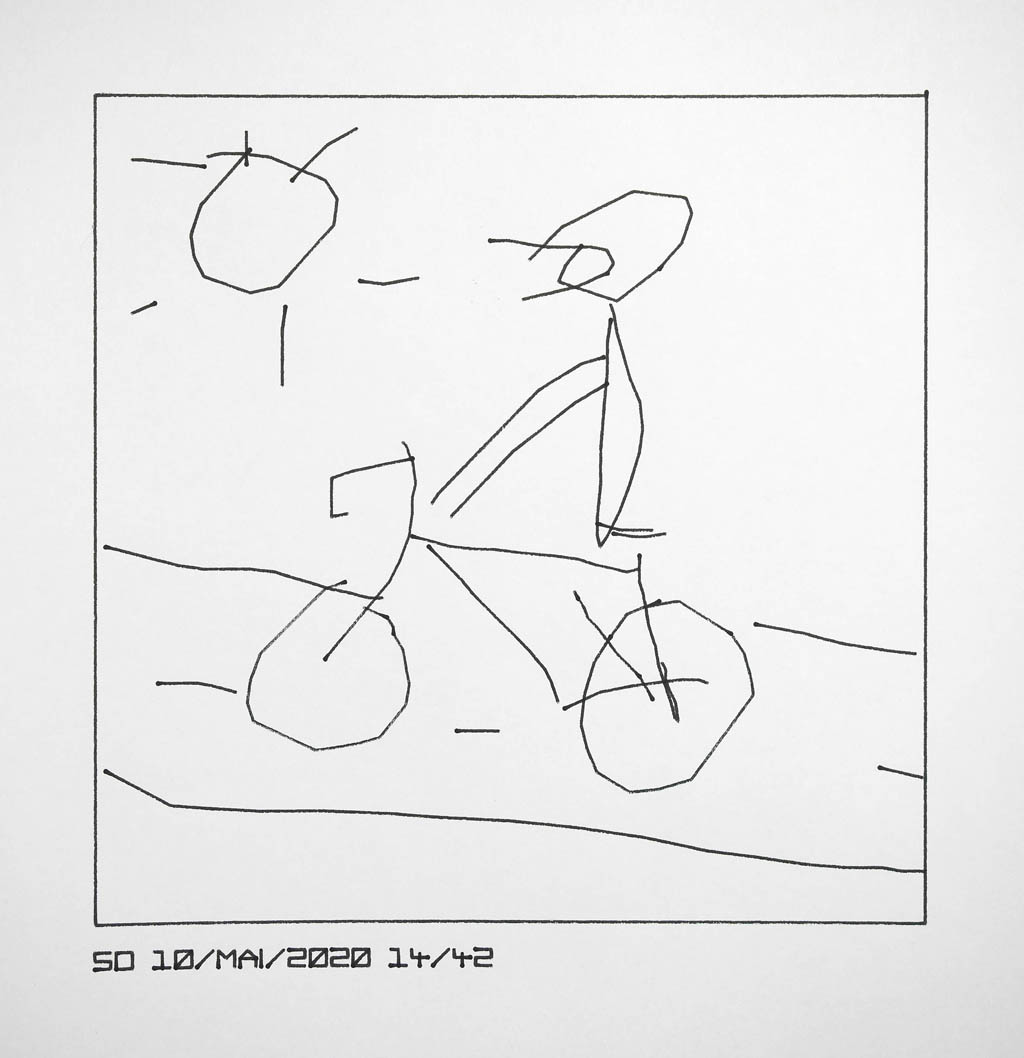
Additional resources
- All photos in hires version. License: CC BY 3.0
- Video in high quality on archive.org
- Arduino codes for ESP and Arduino Mega (Version 1, text only)
- Arduino codes for ESP and Arduino Mega (Version 2, vector drawings)